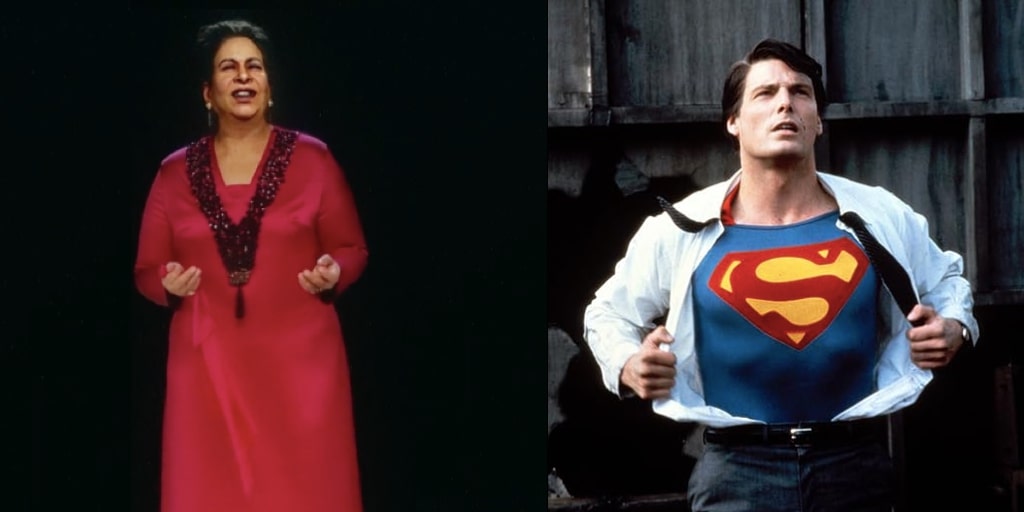There always comes a time when an artist gives their final performance. Whether it is their last concert, their last movie, or their last show, the end comes for everyone.
Or, at least, it used to.
In 1975, legendary Egyptian singer Umm Kalthoum passed away after a 60-year career in music. However, since 2019, technology has brought her back to stages all over the world.
Using a hologram and Egyptian actress Sabreen – who once portrayed the iconic singer in a television series – as a body double, the Star of the East, as she was fondly nicknamed, posthumously returned to the stage for the first time at the Winter at Tantora festival in Saudi Arabia.
Ever since, the beloved singer’s hologram has made a few appearances in different countries. In 2019, she was projected for a concert at the Dubai Opera House. During a celebration of her life in 2020, a show was also held at the Cairo Opera House for over a thousand Egyptians, many of whom had never had the opportunity to see Umm Kalthoum on stage.
Most recently, an even longer concert was held in Jordan on 15 June. Show director Hassan Hanya aimed to recreate the atmosphere of Umm Kalthoum’s legendary performances with lights, color, and costume changes for the hologram, according to The New Arab.
Overall, the performances received a significant amount of attention and love from concert-goers of all ages. After all, Umm Kalthoum’s music can still be heard all over Egypt and beyond, over radio, music streaming sites, or other means.
She was even named one of the ‘200 Greatest Singers of All Time’ by Rolling Stone magazine on 1 January.
However, though fans are delighted at the opportunity to see such a musical icon on stage, other celebrity resurrections are met with less enthusiasm.
In particular, many movie fans are not happy to see their favorite late actors returned to the silver screen through body doubles and computer-generated imagery (CGI).
Rather than an opportunity to experience a “live” performance, as fans of Umm Kalthoum interpreted the holographic concerts, fans of actors like Christopher Reeve liken the resurrections to grave-robbing.
Reeve’s recent posthumous cameo was received very poorly. An icon of the DC Comics franchise long before the current superhero craze, Reeve played an award-winning depiction of Superman in films from 1978 to 1987.
His performances would go on to provide a foundation for the series of Superman films that followed, and his version of Superman is still loved today. Sadly, following health complications, Reeve passed away in 2004.
However, he has recently been digitally resurrected for an appearance in ‘The Flash’ (2023) — much to fans’ displeasure.
The quality of the CGI is under fire, and fans are circulating an interview snippet from the actor, claiming he would be against this cameo because of the pride he took in his work and the deliberate choices he made regarding it.
During the interview, Reeve spoke about his integrity as an actor, stating, “You’ve got your pride and yourself, and those are the last things you can sell […] One of the few things you have to hang on to is your integrity about your work, and I think work defines a great deal of who you are.”
These CGI revivals do not resonate with fans as intended by filmmakers. Rather than an homage to beloved actors, it is seen as an attempt to abuse nostalgia to make more money.
The same mentality can be seen in reactions to posthumous appearances of Carrie Fisher in ‘Star Wars: The Rise of Skywalker,’ Harold Ramis in ‘Ghostbusters: Afterlife,’ and Audrey Hepburn in a Galaxy advert.
Understanding this, looking at the contrasting receptions of these actors as opposed to Umm Kalthoum makes a bit more sense.
The actors’ cameos are oftentimes shoddy with fans claiming their appearances contradict what the actors would have wanted, or disrespect them in their lack of quality.
In contrast, fans feel the concerts Umm Kalthoum is projected into are not a play on nostalgia, but an opportunity for her generations of fans to experience what she was like in live performances, as many were not around during her time.
Perhaps the Star of the East’s holographic rendition was created with an understanding of her image and a respect for her art that may be lacking on the cinematic side of things. Or maybe it is simply a difference of mimicking as opposed to creating an artist’s work after they have passed.
Subscribe to the Egyptian Streets’ weekly newsletter! Catch up on the latest news, arts & culture headlines, exclusive features and more stories that matter, delivered straight to your inbox by clicking here.






Comments (3)
[…] Source link […]
[…] Source link […]